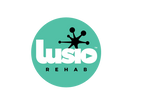Stroke Rehabilitation Explained: The Roles of Physiotherapy and Occupational Therapy
Recovering from a stroke is a journey that requires a combination of therapies to restore movement, regain independence, and improve overall quality of life. Two key types of rehabilitation play a crucial role in this process: physiotherapy (PT) and occupational therapy (OT).
While both therapies aim to support stroke survivors in their recovery, they focus on different aspects. Physiotherapy helps restore physical strength, movement, and balance, while occupational therapy focuses on daily life skills, cognitive function, and independence. Understanding the differences between these therapies—and how they work together—can help stroke survivors and caregivers create a well-rounded rehabilitation plan.

Key Summary
- Physiotherapy (PT) and occupational therapy (OT) are both essential for stroke rehabilitation.
- Physiotherapy focuses on physical recovery—improving movement, strength, and coordination.
- Occupational therapy helps with daily life skills—enhancing independence, cognitive function, and fine motor skills.
- Both therapies complement each other to support a holistic stroke recovery.
Innovative tools like LusioMATE make therapy engaging and interactive, encouraging consistent rehabilitation.
What Is Physiotherapy in Stroke Recovery?
Goals of Physiotherapy for Stroke Survivors
✔ Regaining movement and strength in affected limbs.
✔ Improving balance and coordination to prevent falls.
✔ Enhancing posture and mobility to support walking and standing.
✔ Reducing muscle stiffness and pain through stretching and exercise.
Common Physiotherapy Techniques

-
Range of motion exercises to prevent stiffness and maintain joint flexibility.
-
Strength training to rebuild muscle function.
-
Gait training to improve walking ability.
- Balance exercises to enhance stability and prevent falls.
Physiotherapy is often the first step in stroke recovery, helping individuals regain control of their bodies before progressing to more complex tasks.
What Is Occupational Therapy in Stroke Recovery?
Occupational therapy (OT) helps stroke survivors regain the ability to perform daily activities independently. Many people experience difficulties with fine motor skills, problem-solving, and coordination, which can make simple tasks like dressing, cooking, or using a phone more challenging.
Goals of Occupational Therapy for Stroke Survivors
✔ Improving fine motor skills (e.g., gripping objects, buttoning clothes, writing).
✔ Enhancing cognitive abilities such as memory, attention, and problem-solving.
✔ Developing adaptive techniques to perform daily activities with ease.
✔ Increasing independence in self-care, work, and social interactions.
Common Occupational Therapy Techniques

-
Hand exercises to restore grip strength and coordination.
-
Cognitive exercises to improve memory and thinking skills.
-
Task simulation (e.g., practicing dressing, cooking, or using technology).
-
Use of adaptive tools like LusioMATE, which makes therapy interactive and engaging.
Occupational Therapy bridges the gap between physical recovery and real-world functionality, helping individuals regain their independence.
Physiotherapy vs. Occupational Therapy: Key Differences
While both PT and OT are essential for stroke rehabilitation, they serve different purposes:
|
|
Physiotherapy (PT) |
Occupational Therapy (OT) |
|
Focus |
Restoring movement, strength, and coordination |
Regaining daily living skills and independence |
|
Key Activities |
Exercises for - walking, balance, mobility and hand use |
Practicing real-world tasks (e.g., dressing, cooking, writing) |
|
Main Goal |
Physical recovery and mobility |
Functional independence and cognitive skills |
|
Therapy Tools |
Strength training, gait retraining and functional task training e.g. sit to stand and standing balance |
Adaptive tools, cognitive exercises, fine motor training |
How They Work Together
Many stroke survivors benefit from a combined approach, using PT to regain mobility and OT to apply those physical improvements to daily life. For example:
-
Physiotherapy can help a stroke survivor regain the ability to lift their arm.
-
Occupational therapy then teaches them how to use that movement to dress, eat, or write.
By working together, PT and OT create a comprehensive stroke recovery plan that supports long-term independence.
How LusioMATE Supports Stroke Rehabilitation
LusioMATE, an innovative gamified therapy tool, enhances both physiotherapy and occupational therapy by making rehabilitation more engaging.

How LusioMATE Helps in Stroke Recovery
✔ Encourages consistent therapy by making exercises fun and interactive.
✔ Tracks real-time progress, allowing therapists and patients to monitor improvements.
✔ Customisable for both PT and OT, supporting movement recovery and fine and gross motor skills.
✔ Portable and easy to use at home, in clinics, or on the go.
By using LusioMATE, stroke survivors can stay motivated in their rehabilitation journey, ensuring long-term improvements in strength, coordination, and independence.
FAQs
Q: Do I need both physiotherapy and occupational therapy after a stroke?
A: Yes! Physiotherapy helps regain physical movement, while occupational therapy helps apply those movements to everyday life. Both are essential for a full recovery.
Q: Can I do physiotherapy and occupational therapy at home?
A: Yes, many exercises can be done at home with therapist guidance. Tools like LusioMATE help make home-based therapy more interactive and effective.
Q: How long does stroke rehabilitation take?
A: Recovery looks different for everyone. Some people see progress in weeks, while others may take months or even years. Early, frequent, and targeted therapy - both physio and OT - is key to regaining lost skills. This kind of consistent practice supports neuroplasticity, helping the brain rewire and adapt after stroke.
Conclusion
Physiotherapy and Occupational Therapy play different but complementary roles in stroke rehabilitation. While physiotherapy focuses on regaining movement and strength, occupational therapy helps individuals apply those skills to daily life, fostering long-term independence.
By incorporating both therapies and using innovative tools like LusioMATE, stroke survivors can stay motivated and engaged, leading to a more effective recovery process.
If you or a loved one is undergoing stroke rehabilitation, explore how LusioMATE can support your journey toward regaining strength, mobility, and independence. Contact Us Today.
